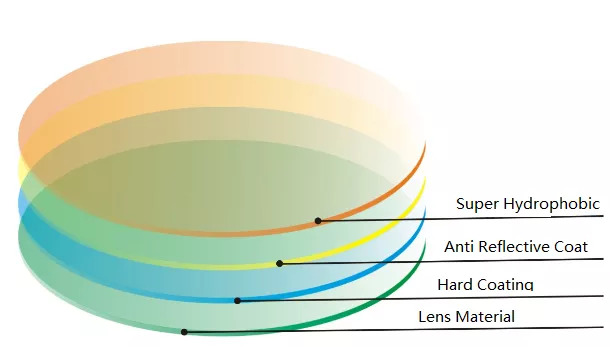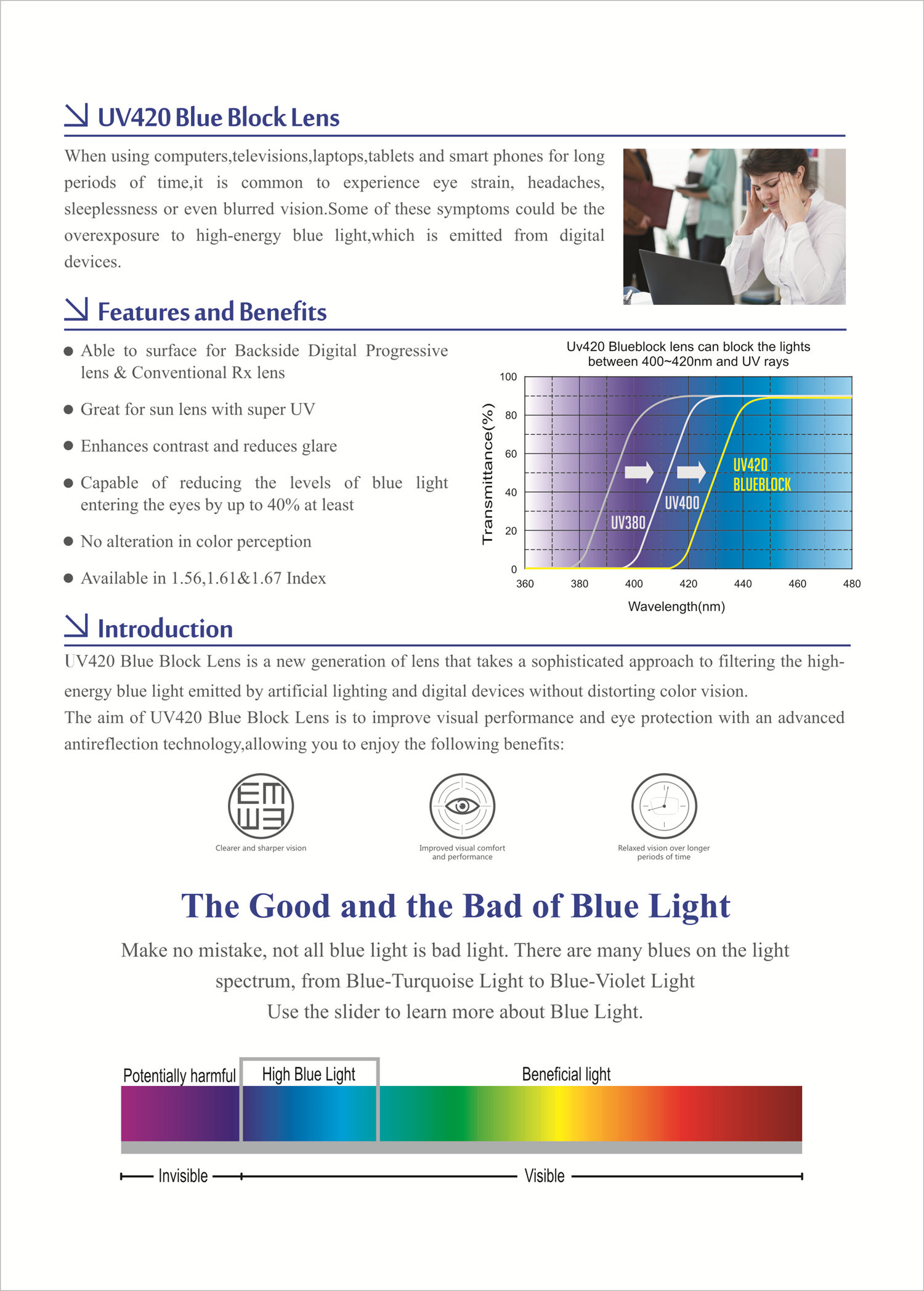






Where is Blue Light in life?
As laptops, tablets and smartphones have become more and more integrated into our daily lives, it makes sense to be aware of any potential negative effects they might have on our health. You’ve likely heard the term ‘blue light’ being bandied about, with suggestions it contributes to all kinds of nasties: from headaches and eye strain to straight-up insomnia.
Why we need blue block lens?
UV420 Blue Block Lens is a new generation of lens that takes a sophisticated approach to filtering the high-energy blue light emitted by artificial lighting and digital devices without distorting color vision. The aim of UV420 Blue Block Lens is to improve visual performance and eye protection with an advanced anti-reflection technology, allowing you to enjoy the following benefits:




What Blue Block Lenses by Convox Actually Do?
1) Blue cut lenses protect your eyes from the harmful effects of blue light caused by prolonged working hours on a computer, laptop or mobile.
2) Lower risk of certain types of cancer.
3) Lower risk of Diabetes, Heart Disease & Obesity.
4) Make you feel engertic when you finish the long time working before the computer.
5)Make your eyes turn tried slowly.
 Hard coating: make the uncoated lenses are easily subjicted andexposed to scratches AR coating/Hard multi coating: protect the lens effectively from reflection, enhance functional and charity of your vision Super hydrophobic coating: make the lens waterproof, antistatic, anti slip and oil resistance
Hard coating: make the uncoated lenses are easily subjicted andexposed to scratches AR coating/Hard multi coating: protect the lens effectively from reflection, enhance functional and charity of your vision Super hydrophobic coating: make the lens waterproof, antistatic, anti slip and oil resistance

| Place of Origin: | Jiangsu, China | Brand Name: | Convox |
| Model Number: | 1.74 BLUE BLOCK BLUE SHMC | Lenses Material: | Resin |
| Vision Effect: | Single Vision | Coating: | HMC |
| Lenses Color: | Clear | Product Name: | 1.74 blue block shmc optical lens |
| Other name: | 1.74 blue cut blue shmc | Design: | Aspheric |
| Material: | MR-174 | Color: | Clear |
| Multi color: | BLUE/GREEN | Transmittance: | 98~99% |
| Abrasion Resistance: | 6~8H | HS CODE: | 90015099 |
| Port: | Shanghai | Diameter: | 65/70/75mm |
What’s the Difference Between 1.67 and 1.74 High-Index Lenses?
1.74 high-index lenses are up to 10% thinner than 1.67 high-index lenses. Both have a high index of refraction and can accommodate strong prescriptions, but 1.74 high-index lenses are for especially strong ones: +/-8.00 or higher.What Are the Advantages of High-Index Lenses?
- They’re thinner, lighter, and less obtrusive within frames, unlike thicker lenses that may protrude outwards. Lower-index lenses can also magnify or shrink the appearance of your eyes, which is not as much of a risk with high-index lenses. .
- They’re versatile. High-index lenses can be single-vision, progressive, and even light-responsive. You can also opt for high-index lenses that filter blue light, and if you’re getting sunglasses, polarized high-index lenses are an option, too. No matter how you’d like to customize your prescription lenses, it’s a good bet that high-index lenses can play along.
- They fit most frames. Your choice of frames won’t be restricted by high-index lenses: Their thin profile enables them to work with many frame styles if you have a higher prescription. (We recommend choosing a frame that centers your eyes behind each lens to reduce the thickness of your lenses. The stronger your prescription, the more important this is! Bigger frames = thicker lenses, regardless of the refractive index.)
- They’re comfortable. High-index lenses won’t sit heavy on your nose and ears, and they’re at less risk of sliding down than thicker lenses.